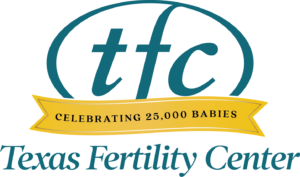
Pregnancy after 35? Is it really that big of a deal?
The number of women who are having babies after age 35 is on the rise. If you are considering pregnancy after 35, the team at our San Antonio fertility center has some important information to share with you.
What to know about pregnancy after 35
First, and most importantly, 35 is not the new 25 when it comes to your ovaries. You may be healthy, active, eat a very nutritious diet and look fantastic, but time is very real when it comes to a woman’s ovaries.
Women are born with all the eggs they will ever have. At birth, a baby girl has about six to seven million eggs, and by the time she reaches puberty, she is down to about 300,000 eggs. She will ovulate about 450 eggs in her lifetime. The remainder undergo atresia or “programmed cell death.” The rate at which atresia happens significantly increases in a woman’s late-30s and early-40s. In other words, you lose eggs even faster as you get older.
Although pregnancy after 35 is certainly possible – and even relatively common – you should know that a woman’s eggs become more susceptible to damage in her late-30s and early-40s. This is why the chance for pregnancy falls with advancing age and also why the risk of miscarriage or delivering a baby with a birth defect rises.
Risks of pregnancy after 35
Our San Antonio fertility center team also wants you to know about specific risks to the mother that are increased in pregnancies after the age of 35. These include gestational diabetes (diabetes in pregnancy), preeclampsia (pregnancy induced high-blood pressure), an increased risk of preterm birth and an increased risk of C-section.
- Gestational diabetes. Diabetes develops in pregnancy more often in women who are over 35, are overweight or have a preexisting glucose intolerance. Having a normal weight and good blood sugar control before pregnancy help prevent diabetes from developing during pregnancy. Gestational diabetes increases the risk of large babies, complications during delivery and stillbirth.
- Preeclampsia. High-blood pressure can develop during pregnancy in women who have never had a problem with their blood pressure before. This condition is called preeclampsia. In addition to high-blood pressure, it can also include protein in the urine, swelling and significant weight gain due to water retention. In severe cases, preeclampsia can cause the mother to have seizures, potentially necessitating premature delivery. Having good blood pressure control prior to pregnancy, having a normal weight and not being pre-diabetic or diabetic prior to pregnancy can help decrease the risk of developing preeclampsia.
- Preterm birth and C-section. Several studies have shown that women who conceive after the age of 35 have an increased risk of preterm birth and C-section. This is thought to be due to gestational diabetes, preeclampsia or fetal growth issues. Having consistent prenatal care and taking care of your body is the best way to help promote a healthy, successful pregnancy.
Though time is certainly important, and pregnancy after 35 comes with a higher risk of complications, the overwhelming majority of pregnancies after 35 go on to produce healthy, normal babies. If you are considering pregnancy after 35, contact our San Antonio fertility center about your plans for a healthy pregnancy and baby.


